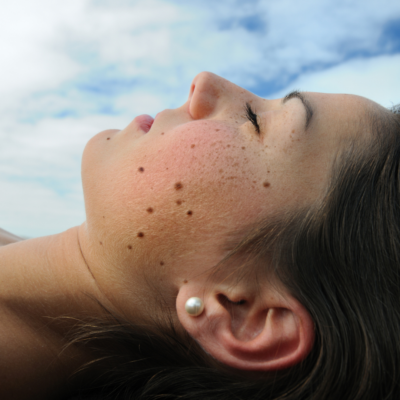Skin Cancer
California Skin Institute physicians are highly experienced with treating all types of skin cancer, using a number of different techniques. Our providers are experts when it comes to Mohs micrographic surgery, excisions, and reconstruction techniques. When you visit one of our locations for skin cancer treatments, our doctors and staff will take the time to explain all of your options to you, and design a customized skin cancer treatment plan for your needs.
How Skin Cancer Forms
Over 90 percent of all skin cancers are caused by exposure to ultraviolet (UV) radiation. UV radiation (which occurs naturally in sunlight or artificially in tanning beds) damages DNA within the skin cell. This can cause it to grow uncontrollably. However, most of the time, our body destroys these cells and cancer never forms.
But when cells are not destroyed, they begin to grow uncontrollably, which leads to cancers like basal cell carcinoma, squamous cell carcinoma, and melanoma.
Treating Skin Cancer
Here at California Skin Institute, we use a variety of methods to treat skin cancer in patients with high cure rates. Our specialists are highly trained in excision, Mohs micrographic surgery, as well as reconstructive surgery, to ensure a favorable cosmetic outcome.
- Mohs micrographic surgery: California Skin Institute has fellowship-trained surgeons who are highly skilled at performing this procedure and subsequent reconstruction. During the procedure, your surgeon will remove the tumor, will divide its border into thin sections and examine it under the microscope, to ensure that the growth has been removed in its entirety.
If the microscopic examination of the border reveals tumor cells, your surgeon will remove additional tissue in the treatment area and examine it again. This process will continue until the area surrounding the tumor (the border) is determined to be free of cancer cells.
Because 100% of the border is examined under the microscope, the cure rate is very high with Mohs surgery, as compared to regular excision (where the skin is removed and is sent off to a lab, where only a small percentage of the border is examined). Further, this treatment option provides for the smallest scar, as your surgeon will continue removing tissue only in the area where cancer cells are shown to be present.
- Reconstructive Surgery: If you undergo skin cancer surgery at California Skin Institute, our practitioners can also perform reconstructive surgery to significantly minimize the scar at the treatment site. Depending on the size of the treatment area, the wound may be closed in a straight line, a graft procedure, a flap procedure or a combination of closure techniques. The goal of reconstructive surgery is to leave the smallest scar possible. With time, the scar will further heal and become less visible.
Other Skin Cancer Treatments
Other treatments including curettage and electrodessication or topical therapy may be an option for very superficial non-melanoma skin cancers; however, these provide a lower cure rate.
Advanced melanomas often require multidisciplinary care, and our practitioners will counsel you on the best treatment course and coordinate with oncologists.
If you or a loved one are concerned about skin cancer, have noticed unexplained growth of moles or skin discolorations, please call a California Skin Institute practice near you for an evaluation or find a location near you and request a skin check appointment.
Disclaimer
This is to be used only as an educational piece. Individuals should not use it to self-diagnose a skin condition or problem.
Treatments for Skin Cancer




 / 291 Reviews
/ 291 Reviews